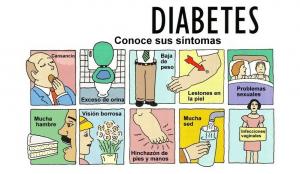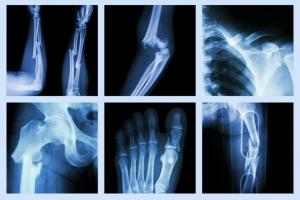Bone matrix: what is it, components and characteristics
Bones are rigid organs that form the endoskeleton of vertebrate animals. Its main function is to give living beings protection, movement capacity, support, production of blood cells (hematopoiesis) and storage and release of minerals based on the physiological demands of the organism.
Together with muscles and tendons, the set of bones in humans form what we know as the “locomotor system”. The striated musculature contracts at will based on the directives of the brain, and as it is attached to the bones, acts as a lever to execute the movements we want to perform at any time dice.
Humans have a total of 206 bones. 80 of them are part of the axial skeleton, the central axis of the body, and 126 make up our limbs. Beyond the basic osteology already explored on other occasions, today we bring you a tissue section of the bone of enormous interest at an anatomical and clinical level: know everything about the bone matrix.
- Related article: "The 4 most important diseases of the skeletal system"
Generalities of bone tissue
Bone tissue, along with bone marrow and other connective tissues, gives bones structure and functionality.. For its part, this is defined as a tissue organization of a conjunctive nature composed of cells and calcified non-living elements, which form what we know as extracellular bone matrix.
As we see them as hard and resistant, we believe that bones are physiologically rigid and that they do not undergo changes over time: nothing could be further from the truth. Bone tissue is hard, but also extremely plastic, as it exhibits a metabolism of highly complex resorption and repair mediated by ions, cells, hormones, proteins and factors nutritional. There are cases in which the injuries and trauma are too aggressive for the bone to be repaired, but, in most cases, the bone tissue is capable of recovering after a fracture.
Bone tissue is made up of 2% cells and 98% extracellular substances, that is to say, bone matrix. Although we will dedicate a few final notes to knowing the cells of the bones, this time we focus on what surrounds them.
What is the bone matrix?
The bone matrix It is the characteristic component of bone, since it gives it its anatomical and physiological qualities. It is made up of 65-70% inorganic salts (minerals) and 30-35% of organic substances. We tell you the particularities of both elements in the following lines.
1. Inorganic portion
The mineral part of the matrix is what gives the bones the capacity for storage, resistance and protection. The inorganic material encompassed in this section consists of calcium phosphate deposits, in the form of a substance known as hydroxyapatite. Apatite crystals are about 40 nanometers long and have the shape of a hexagonal prism, often with great development on the pyramid faces. As you already know, they have a whitish-yellowish color.
As we have already said, the inorganic matrix represents approximately 70% of the dry weight of bone. 99% of the calcium, 85% of the phosphorus and 40-60% of the sodium and magnesium that the body needs is stored entirely in our skeleton. Without going further, thanks to our bones, human beings “store” within us 1-1.2 kilograms of pure calcium. This mineral is essential for muscle contraction, transmission of nerve signals, absorption of vitamin B12, stimulation of hormonal secretions and much more.
- You may be interested in: "Major Cell Types of the Human Body"
2. Organic portion
It accounts for 30% of the bone matrix, approximately. This organic section is represented mainly by proteins, more specifically, by different types of collagen. Type I collagen is the one with the greatest presence (95% of the total organic portion), but traces of type IV collagen (5%) and, occasionally, type III are also observed. Depending on the orientation of the collagen fibers, the bone matrix can be laminar, non-laminar and osteonic or concentric laminar in nature.
In addition to collagen, in the organic part of the bone matrix we also find other proteins, although in a much smaller proportion. Here is a list of the most important ones:
- Osteocalcin: a protein of a hormonal nature (hormone) whose presence in the blood is correlated with the coefficient of bone formation.
- Osteonectin: a phosphoprotein that interacts with collagen and inorganic salts in the bone matrix.
- Thrombospondin: secretory protein with antiangiogenic capabilities, that is, it inhibits the formation of new blood vessels from existing ones.
- Alkaline phosphatase: responsible for the dephosphorylation process at the molecular level.
The cellular part of the bone
We leave the bone matrix to briefly name that 2% of cellular matter that makes up bone tissue. First we have the osteoprogenitor cells, which differentiate, during their development, into other cell bodies useful for bone production.
Of great interest are also osteoblasts, the bone cells responsible for secreting the bone matrix that we have just described. They are capable of synthesizing hydroxyapatite crystals which, as we have already said, are made up of calcium and phosphate. It is curious to know that osteoblasts, like almost any other type of cell, preserve the ability to replicate themselves themselves, but this is not possible over time because they are "locked" in the solid matrix that they themselves synthesize.
Osteocytes come into play here, representing more than 90% of the cells of bone tissue.. They are formed from osteoblasts (which in turn are derived from osteoprogenitor cells) and their work consists of maintaining the bone matrix, either through the synthesis of new materials or the resorption of themselves. Due to their ability to store or "release" bone calcium into the blood, they are considered to actively participate in the body's metabolism and mineral balance.
In last place we have osteoclasts, multinucleated cells that degrade and reabsorb bone tissue. It may seem counterproductive to destroy bone material (and it really is), but, When minerals essential for certain physiological processes are lacking in the body, sometimes there is no other option.
The bone matrix is not watertight
As we have said previously, the bone matrix is constantly changing. Normally, the process of synthesis and resorption of the matrix is balanced, and is mediated by substances such as the hormone parathyroid (PTH), calcitonin, estrogens, vitamin D, various cytokines, and other local factors (prostaglandins).
The peak of bone mass is located in the human species over 30 years, because up to here bone growth occurs, or what is the same, a higher rate of matrix synthesis than resorption. From here, a physiological "plateau" is generated that lasts about 10 years, but as we age, more and more bone matrix is destroyed and less is synthesized.
From 40 years of age, each year 0.3-0.5% of the bone matrix is lost. In women, the condition accelerates in an exorbitant way during menopause, due to the drastic fall of sex hormones, which translates into a rate of bone loss of up to 5% per year (although it later reverts to stabilize).
As you may already suspect, this bone aging translates into a pathology more than known to any elderly person: osteoporosis. This condition is common in the aging population, but it is undoubtedly a clinical event with an incidence much higher in women, due to the exaggerated bone resorption that occurs in the 5-7 years after menopause.
It is estimated that 80% of women over 80 years of age suffer from osteoporosis, while the prevalence in elderly men older than 70 years oscillates 11.3%. It is not surprising that the majority of hip fractures and other serious injuries occur in people of advanced age: when the bones are fragile, any fall can seriously compromise the integrity of the individual.
Resume
We do not want to end on a sour note, as the development of the process is as important as its outcome. The bone matrix houses an infinity of secrets and, without a doubt, it is a truly fascinating conglomeration of substances from an anatomical and physiological point of view. How to suspect, for example, that calcium deficiency in the body could cause the bone matrix to be actively degraded by bone cells?
As you have seen, nothing in the human being is immovable, however rigid and indestructible it may seem. Like all the tissues that define us, bones undergo drastic changes based on individual development, environmental conditions, internal homeostasis and many other factors.
Bibliographic references:
- Bone matrix and consolidation, Medwave. Picked up on February 25 at https://www.medwave.cl/link.cgi/Medwave/Revisiones/RevisionClinica/4155
- Module of anatomical and physiological bases of sport: the bones. Picked up on February 25 at http://www.edvillajunco.es/doc/1_los_huesos.pdf
- Journal of Osteoporosis and Mineral Metabolism: Osteoporosis. Definition. Epidemiology. Picked up on February 25 at http://revistadeosteoporosisymetabolismomineral.com/2017/07/11/osteoporosis-definicion-epidemiologia/#:~:text=En%20Espa%C3%B1a%20se%20calcula%20que,%2D29%2C57%25)9.


